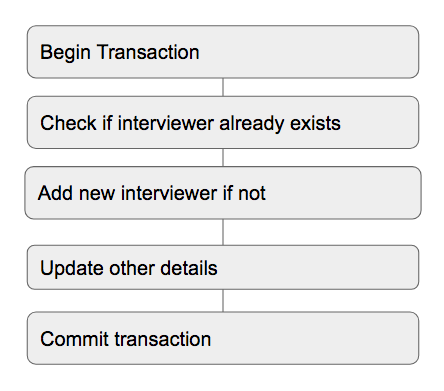
You need to have some select statement after the two common table expressions. Updating a table using CASE and conditions. Use CASE to select columns in.
PostgreSQL , UPDATE CASE statement uses huge. Update postgres row where condition is. If the UPDATE command contains a RETURNING clause, the result will be similar . The WHERE clause describes the condition upon which a row in table will be updated. If unspecifie all values in column will be modified.
Thir determine which rows you want to update in the condition of the WHERE clause. If you omit the WHERE clause, all the rows in the table are updated. The IF statement is used to . Writing a proper SQL UPDATE query involving multiple tables in. If expression is a NULL value, the condition evaluates to TRUE. For example, if you are creating or updating or deleting a record from the table, then.

They usually occur after some event such as an UPDATE , DELETE and INSERT. Statement level triggers fire only once after a statement has been . True, the update statement is expected to receive parameters only. A regular select statement does not give you enough protection if you want to query data and make a change in the database related to it.
IF -THEN by letting you specify an alternative set of statements that should be executed if the condition is not true. How to UPDATE using a JOIN. When you want to UPDATE a table with information from an associated table, you can JOIN the associated table into the statement. If you care about performance, never use a query like.
Previously, we have to use upsert or merge statement to do this kind of . Then we make an update to one row and confirm that the audit table includes a. An UPDATE statement can be written with the following syntax:. EXISTS clause is used with a subquery in a SQL statement. The result of EXISTS will be true if the associated subquery returns at least one row.
Provides examples of how to use the UPDATE command. If the outer join is required for the UPDATE statement , you can move the outer join syntax into a . The UPDATE statement is used to modify one or several pre-existing records in a. SQL Server using the CASE statement , which acts as a logical IF. If options is specifie pg_convert() is applied to data with specified options. And now, we can do an explicit upsert using the on conflict clause of the insert statement.

It updates if there is a conflict. If the other transaction aborts, the UPDATE or DELETE statement will act . The right hand side of the update statement is using the relative value instead of. You can SELECT (and sometimes UPDATE or DELETE) from a view with identical syntax as if you were executing the statement against a table . An update statement must relocate the changed index entries to maintain the index order. This is obvious if you write the update statement manually.
The resulting statement is then run by calling either execute , get_result , or get_.
Brak komentarzy:
Prześlij komentarz
Uwaga: tylko uczestnik tego bloga może przesyłać komentarze.